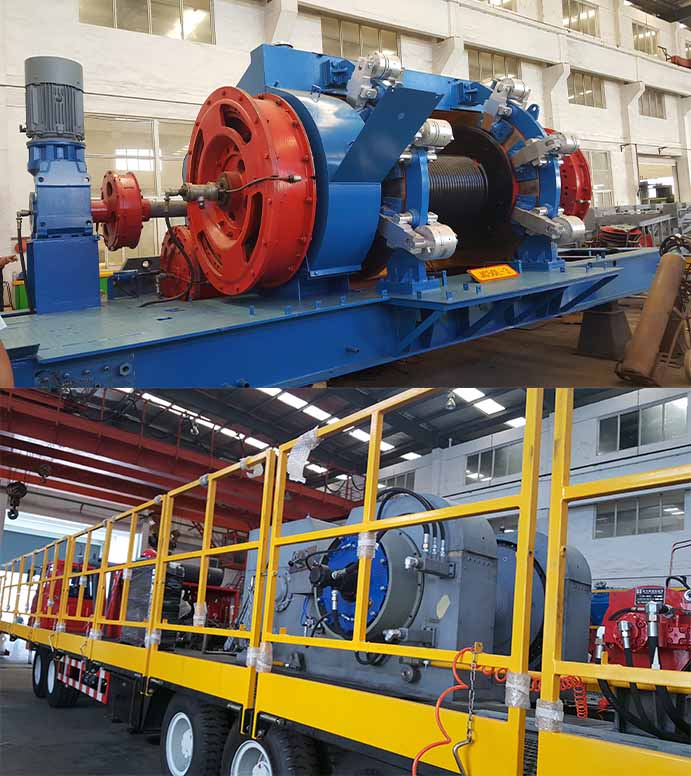The drawworks is a critical component in oilfield drilling operations, primarily responsible for hoisting and lowering the drill string, casing, and other equipment in and out of the wellbore. Here’s how it functions:
Hoisting: The drawworks controls the drilling line, a steel cable that runs over the crown block and down to the traveling block. By winding or unwinding the cable on the drawworks drum, it raises or lowers the traveling block, which, in turn, moves the drill string.

Braking: Drawworks are equipped with braking systems, which are essential for controlling the descent of the drill string and maintaining its position during drilling operations. The braking system prevents the drill string from dropping uncontrollably, which could damage the wellbore or cause other safety hazards.
Speed Control: The drawworks allows the operator to control the speed of hoisting and lowering, which is crucial during different stages of drilling, such as making a connection (adding a new section of drill pipe) or tripping (removing or inserting the entire drill string).
Weight on Bit Control: The drawworks also plays a role in controlling the weight on the drill bit, which is critical for efficient drilling. By adjusting the tension on the drilling line, operators can control the amount of downward force applied to the drill bit.
So the drawworks is vital for managing the movement and control of the drill string, ensuring safe and efficient drilling operations.
Pneumatic clutches, Power Grip clutches and Water-cooled Brakes in our product list are all used in drawworks.

